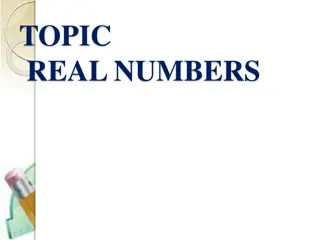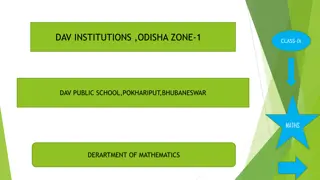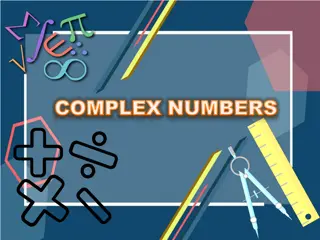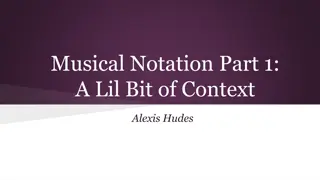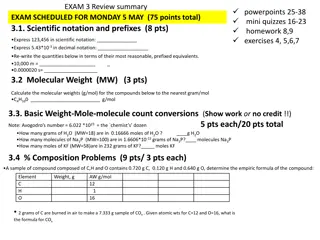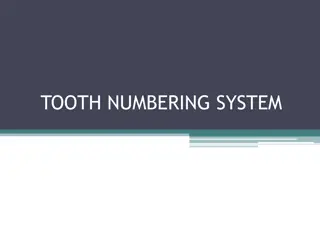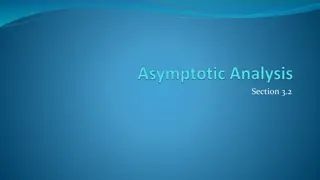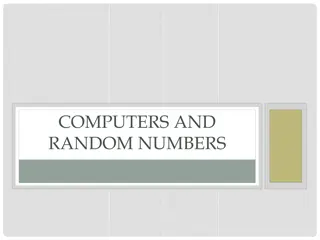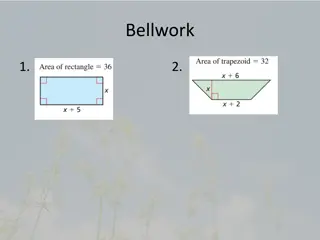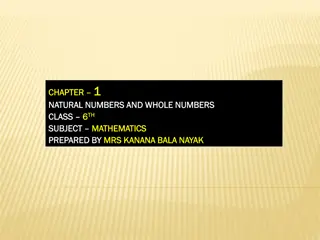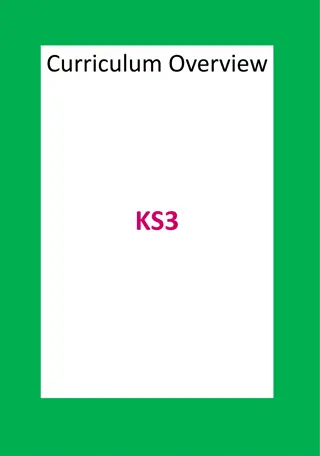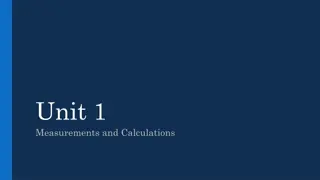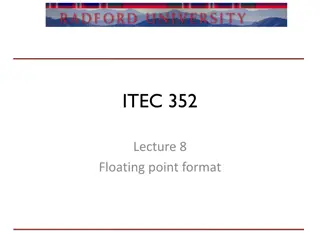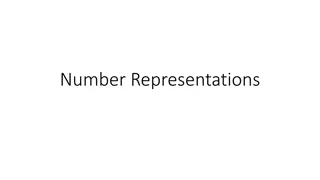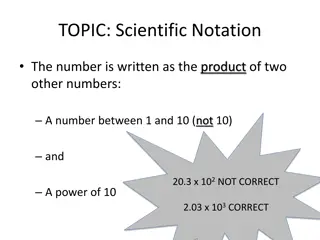Understanding Numbers and Notation in English
Explore the nuances of representing numbers in English, including fractions, decimals, noughts, telephone numbers, cardinal versus ordinal numbers, and the use of "and" in British English. Dive into the significance of punctuation when writing large numbers.
Download Presentation

Please find below an Image/Link to download the presentation.
The content on the website is provided AS IS for your information and personal use only. It may not be sold, licensed, or shared on other websites without obtaining consent from the author. Download presentation by click this link. If you encounter any issues during the download, it is possible that the publisher has removed the file from their server.
E N D
Presentation Transcript
1 FRACTIONS AND DECIMAL NUMBERS (razlomci i decimalni brojevi) We say simple fractions like this: a half 1/4 a/one quarter 1/8 an/one eighth 3/7 three sevenths 2/5 two fifths 3 three and three quarters 6 1/8 six and one eighth More complex fractions (using the word over): 317/509 three hundred and seventeen over five hundred and nine
2 DECIMALS (decimalni brojevi) 0.4 nought point four 0.375 nought point three seven five (NOT nought point three hundred and seventy- five) 4.7 four point seven
3 NOUGHT, ZERO, NIL etc. The figure 0 is usually called nought in British English and zero in American English. When we say numbers one figure at a time, 0 is often called oh: My account number is four one three oh six. (41306) In measurements of temperature, 0 is called zero (followed by a plural noun): 0 - zero degrees Celsius Scores in team games are called nil (in American E. zero or nothing). In tennis, the word love is used: And score at half-time is: Scotland three, England nil. Forty-love; Nadal to serve.
4 TELEPHONE NUMBERS (telefonski brojevi) 307 4922 - three oh seven, four nine double two (American English: three zero seven, four nine two two)
5. CARDINAL AND ORDINAL NUMERS (osnovni i redni brojevi) After a noun we usually use a cardinal number (one, two ) instead of an ordinal number (first, second ). This structure is common in titles: The fourth book book four The third act Act Three However, the names of kings and queens are said with ordinal numbers: Henry VIII: Henry the Eighth Elizabeth II: Elizabeth the Second
6 and In British English we always say and between hundred/thousand/million and a number below a hundred. In American English and can be dropped: 310 three hundred and ten 5,642 five thousand, six hundred and forty- two 2,025 two thousand and twenty-five
7 PUNCTUATION (interpunkcija) In writing, we generally use commas (,) to divide large numbers into groups of three figures: 3,127 (three thousand, one hundred and twenty- seven) 5,460,000 (five million, four hundred and sixty thousand)
8 five hundred etc. without s After a number, the words dozen, hundred, thousand, million and billion have no final s: 210 two hundred and ten 3,000,000 three million 500 five hundred pounds However, we say: millions of years hundreds of pounds
9 SPOKEN CALCULATIONS (+,-) Ways of saying calculations in English are: 2+2=4 Two and two is/are four. (informal) Two plus two equals/is four. (formal) 7-4=3 Four from seven is/leaves three. (informal) Seven take away four is/leaves three. (informal) Seven minus four equals/is three. (formal)
10 SPOKEN CALCULATIONS (x,) 3x4=12 Three fours are twelve. (informal) Three times four is twelve. (informal) Three multiplied by four equals/is twelve.(formal) 9 3 =3 Three(s) into nine goes three (times). (informal) Nine divided by three equals/is three. (formal)


